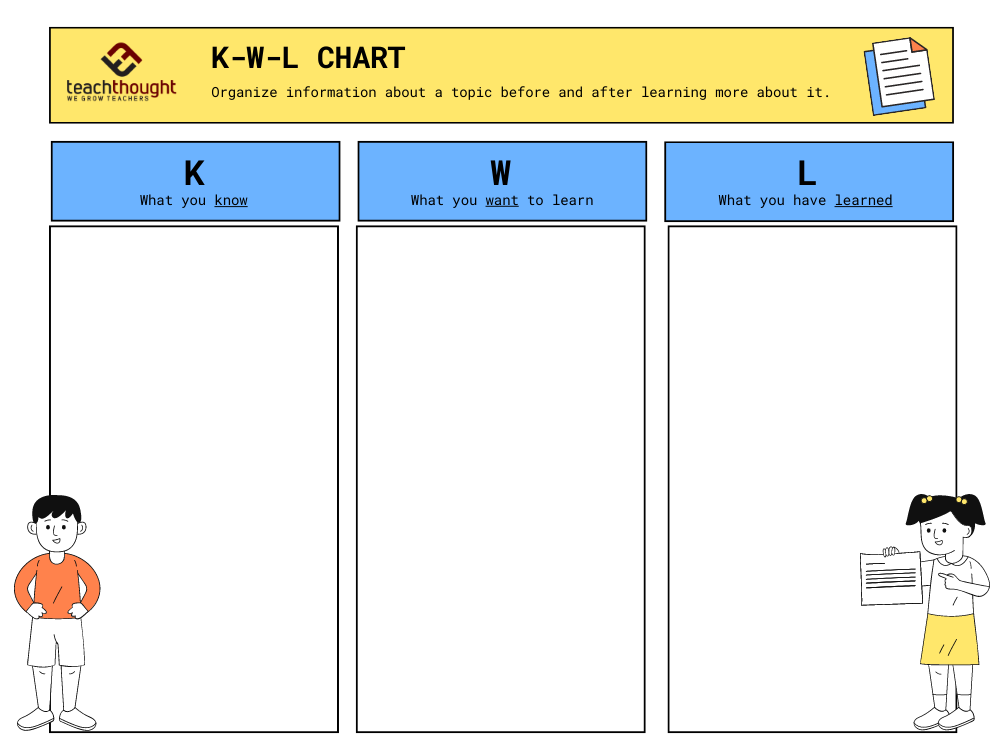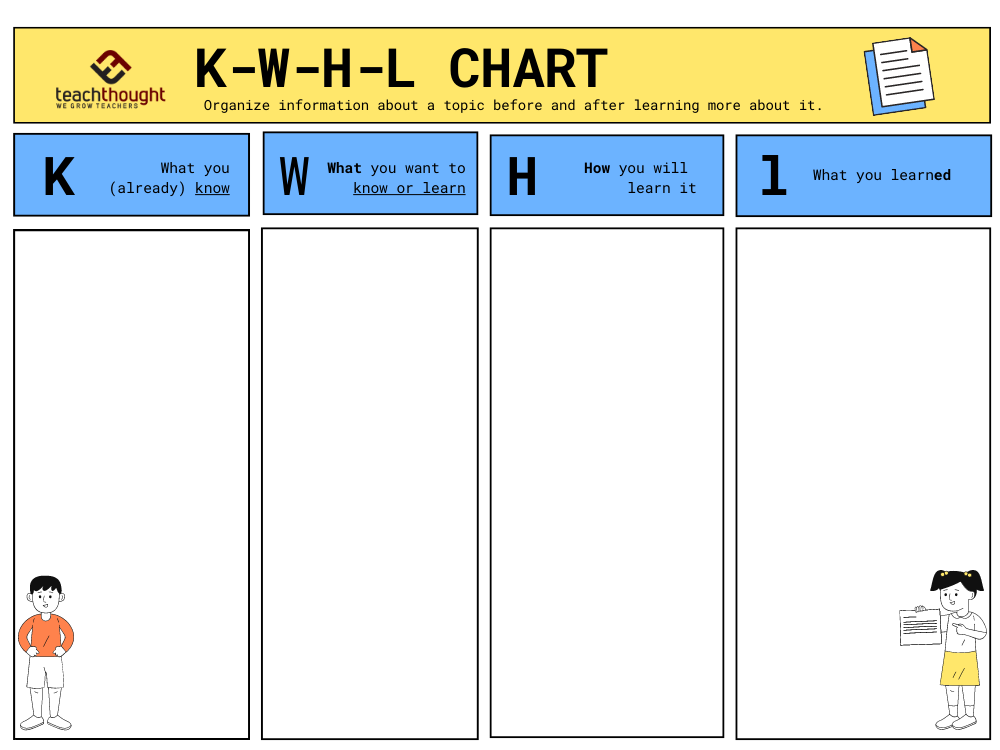What’s A KWHLAQ Chart? Like A KWL Chart But Better

by TeachThought Staff
What’s A KWL Chart?
A KWL Chart is a graphic organizer that helps students plan and reflect upon their learning.
K: What do I already know? (Before learning)
W: What do I want or need to know? (Before learning)
L: How might I learn what I want or need to learn? (Before learning)
L: What did I learn? (After learning)
What’s The Difference Between A KWL Chart And A KWHL Chart?
A KWHL chart is a variation of a KWL chart that adds ‘How’ to the learning process. In this way, students have to brainstorm, speculate, or otherwise identify or plan how they’re going to learn what they identified in the preceding ‘What?’ step.
See also Graphic Organizers That Promote Critical Thinking

What’s A KWHLAQ Chart? Like A KWL Chart But Better
- What do I (already) know?
- What do I want to know?
- How can/should/will I learn it?
- What did I learn?
- How might I apply what I have learned? What action should/will I take?
- What new questions do I have?
6 Questions Behind KWHLAQ–And The Purpose Of And Examples Of Each
1. What do I (already) know? (Before)
Purpose: Activate background knowledge; create a context and need for new learning
Examples Of Student Responses
History/Social Studies: I know that American Civil War was between the Union and the Confederacy and I know who led each side.
2. What do I want to know? (Before)
Purpose: Clarify/specify a purpose for learning
Example Of A Student Response
History/Social Studies: I’d like to learn more about the role of propaganda in causing the war–and how it fueled fighting as the war progressed
3. How will I learn it? (Before)
Purpose: Brainstorm ideas for sources of learning/experience
Example Of A Student Response
History/Social Studies: I might check the library for a book on the American Civil War as a general topic. I will also search the internet for credible sources of information and possibly try to connect with experts in academics–maybe an email to a college professor who specializes in the Civil War, for example.
4. What did I learn? (After)
Purpose: Reflect on learning (here are some ways to reflect on learning); improve retention of what was learned
Example Of A Student Response
History/Social Studies: I learned that though the channels that distributed propaganda then versus now have changed, the effect of propaganda remained similar to today: brainwashing, confirmation bias, and two ‘sides’ firmly entrenched in the positions of their argument with little actual discussion or non-violent progress toward a comprehensive solution.
A Second Variation: An Alternative To KWL Charts
A second alternative to KWL and KWHL charts is a KWHLAQ chart where ‘Application’ and ‘Questions’ are added to the learning process.
5. How might I apply my learning? What action could/will I take? (Before and/or After)
Purpose: Brainstorm/plan ways to apply new learning; create an actionable purpose for knowledge/learning
Example Of A Student Response
History/Social Studies: I could use what I learned to create a short video on propaganda during the American Civil War or compare and contrast it to propaganda methods used today.
6. What new questions do I have? (After)
Purpose: Clarify the nature and limits of knowledge and pre-existing or emerging knowledge gaps; sustain inquiry process to help uncover new needs/opportunities for learning moving forward
Example Of A Student Response
History/Social Studies: How did propaganda methods evolve with the explosion of technology in the 21st century? What role can/should the federal government play to reduce it? What responsibility do social media platforms have to reduce/mitigate/eliminate it from their platforms? Who gets to decide the difference between a ‘truth’ and what others might consider ‘propaganda’?
What’s A KWHLAQ Chart? Like A KWL Chart But Better